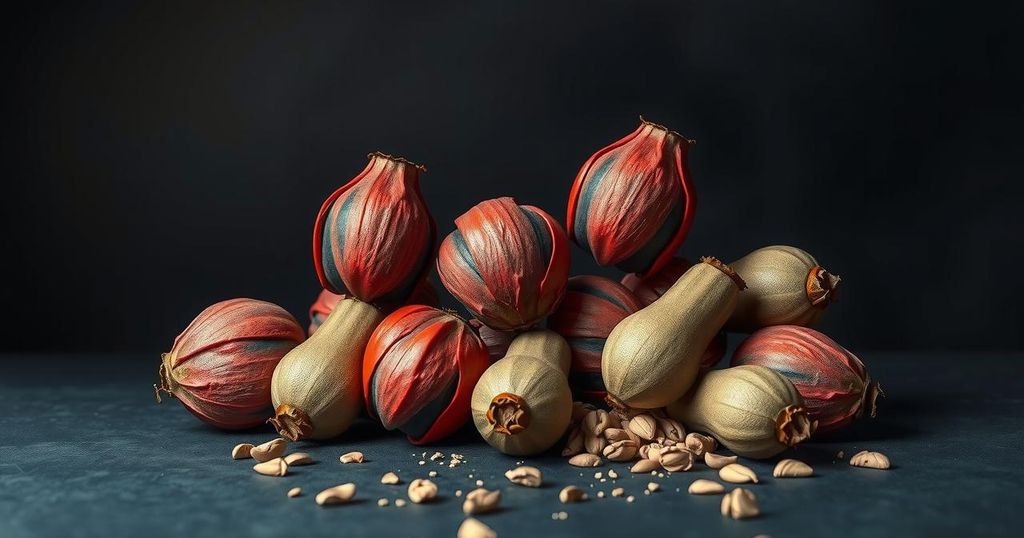Opium prices in Afghanistan have risen significantly since the Taliban’s drug ban in 2022, with costs reaching $750 per kilogram. Despite a decrease in production and trafficking, organized crime groups continue to profit. A more than 13,000-tonne stockpile remains, highlighting the need for sustainable economic alternatives for struggling farmers and the risks of potential harmful drug alternatives.
Opium prices in Afghanistan have surged tenfold since the Taliban’s drug ban was enacted in 2022, with the cost reaching $750 per kilogram compared to $75 three years prior, according to the latest report from the UN Office on Drugs and Crime (UNODC). This price increase compensates sellers for the declines in overall production and poppy acreage. However, heroin and opium seizures have dropped by approximately 50% in weight since 2021, illustrating the lower production and trafficking levels post-ban.
Opium is a key ingredient in heroin production, with Afghanistan, Colombia, and Myanmar as the primary sources of illegal opium globally. The UNODC emphasized that despite decreased production, organized crime groups have benefited greatly from the inflated prices, stating, “massive profits are still being made, primarily benefiting high-level traders and exporters in organised crime groups.”
The UN estimates that, as of the end of 2022, Afghanistan’s opiate stocks totaled 13,200 tonnes, projected to fulfill the demand for Afghan opiates until 2027. Ghada Waly, the UNODC executive director, stated, “The surge in opium prices and the substantial stockpiles mean that drug trafficking in Afghanistan remains a highly profitable illicit trade.” She stressed the need for a collaborative counter-narcotics strategy that targets trafficking networks while promoting sustainable economic alternatives for farmers.
Prior to the cultivation decline, Afghanistan’s opium stockpiles were valued between $4.6 billion and $5.9 billion, accounting for approximately 23 to 29% of the nation’s economy in 2023. While this may have provided some relief for ordinary Afghans amid worsening economic conditions, the UNODC indicated that 60% of opiate stocks are held by large traders, leaving most farmers in severe financial distress.
To prevent farmers from reverting to opium cultivation, sustainable economic alternatives are urgently required, especially considering the current high prices. Moreover, the continued scarcity of opium may drive stakeholders to explore alternative drugs, such as fentanyl, which pose greater health risks than heroin.
In summary, the dramatic increase in opium prices in Afghanistan has led to significant profits for organized crime groups while simultaneously exacerbating the financial struggles of local farmers. The UNODC calls for urgent solutions that provide viable economic alternatives to discourage illicit poppy cultivation. Moreover, the risk of transitioning towards more harmful substances underscores the critical need to address the underlying economic issues.
Original Source: news.un.org




